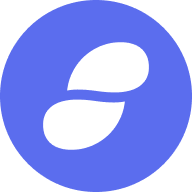В эпоху цифровых технологий ограничения и цензура не должны препятствовать доступу к информации. Однако автократическое правление и постоянная цензура затрудняют свободное получение знаний. В связи с этим возникла потребность в децентрализованной платформе, которая позволила бы пользователям получать информацию без ограничений. Эверипедия (IQ) является решением, которое удовлетворяет эту потребность.
Что такое Эверипедия
Эверипедия - это всеобъемлющая и всеохватывающая сеть знаний, предоставляющая пользователям платформу для изучения, взаимодействия и участия в обсуждении широкого круга тем. Будучи энциклопедией на основе блокчейна, она представляет собой хранилище, где люди могут делиться своими мыслями и мнениями.
Основная цель Эверипедии - создание устойчивой инфраструктуры, обеспечивающей беспрепятственный доступ к информации для всех желающих. Она призвана разрушить существующие барьеры на пути к знаниям, обеспечив пользователям доступ к обширной библиотеке информации без каких-либо ограничений и цензуры.
Несмотря на сходство с Википедией по характеру совместной работы, Эверипедия идет дальше, предоставляя участникам возможность зарабатывать. Используя ряд инструментов и децентрализованных приложений (DApps), таких как PredlQT, HilQT и Эверипедия OraQcles, платформа стремится к созданию действительно децентрализованной сети.
Команда Эверипедии
Команда Эверипедии состоит из Трэвиса Мура, Теодора Форселиуса и Сэма Киазмана, которые сыграли важнейшую роль в разработке платформы. Вдохновленные концепцией Википедии, крупнейшего в мире хранилища знаний, эти люди стремились создать усовершенствованную и полностью децентрализованную версию.
Помимо основной команды, Эверипедию поддерживают преданные своему делу профессионалы, которые вносят свой вклад в различные сферы деятельности. Все вместе они работают над тем, чтобы обеспечить пользователям беспрепятственный, удобный и неограниченный доступ к информации.
Как работает Эверипедия
Эверипедия функционирует как альтернатива Википедии, основанная на блокчейне и использующая цепочку EOS. Она позволяет пользователям предоставлять информацию, которая может быть проверена, точна и подтверждена авторитетными источниками. Эверипедия функционирует на основе трехмодульной системы, включающей модули управления, токенов и представления информации.
Кроме того, в Эверипедии встроено приложение PredlQT DApp, которое представляет собой рынок предсказаний, где пользователи могут делать прогнозы относительно будущих событий и получать вознаграждение в зависимости от точности своих прогнозов.
При сохранении децентрализации платформы большое внимание уделяется обеспечению точности предоставляемой информации. Команда редакторов тщательно проверяет каждый присланный материал, гарантируя, что публикуется только та информация, которая подтверждена достоверными источниками.
Для предотвращения злоумышленников Эверипедия требует, чтобы потенциальные участники вносили часть своих средств в сеть, что препятствует неэтичному поведению и повышает целостность платформы.
IQ: Нативный токен Эверипедии
Нативный токен Эверипедии - IQ, который служит инструментом вознаграждения участников и контрибьюторов сети. Пользователи получают определенный процент в качестве поощрения за выполнение задач в Эверипедии.
Кроме того, IQ обладает торговыми возможностями, позволяя пользователям покупать и продавать токены.
IQ - это инструмент вознаграждения и торговли, а также токен управления. Владельцы токенов IQ получают право голоса, что позволяет им активно участвовать в процессах принятия решений на платформе Эверипедии. Кроме того, токены IQ можно стейкать, что служит целям стейкинга в сети.
Токеномика IQ
Максимальное и оборотное предложение составляет 21 млрд и 11,1 млрд соответственно. IQ позволяет пользователям вносить свой вклад в развитие платформы и является токеном вознаграждения. Он является мощной и основной частью платформы Эверипедии.
Варианты использования IQ
IQ служит для различных целей использования в сети. Как токен управления, он предоставляет владельцам право голоса по вопросам, связанным с сетью. Кроме того, IQ вознаграждает редакторов и контрибьюторов, играющих значительную роль в развитии сети. Кроме того, токен может быть использован для получения вознаграждения, что позволяет владельцам токенов получать выгоду от их участия и поддержки.
Распределение IQ
Распределение токенов IQ происходит следующим образом:
- Пятьдесят один процент токенов был дропнут среди держателей EOS.
- 15,7% было выделено учредителям и ранним сторонникам.
- 14,7% принадлежали компании EOS VC.
- Казначейство владело десятью процентами.
- Фонд IQ занимал пять процентов.
- 3,6% зарезервированы для будущего развития.
Будущее Эверипедия
Будущее Эверипедии выглядит многообещающе, поскольку команда сосредоточена на интеграции большего количества инструментов и редакторов для обеспечения точности и достоверности информации. Компания стремится поддерживать самые высокие стандарты достоверности информации, о чем свидетельствуют ее планы по внедрению современных инструментов проверки.
Имея мало прямых конкурентов, Эверипедия занимает заметное место в этом пространстве. Проект привлек к себе положительное внимание, и по мере налаживания стратегических партнерских отношений и формирования прочных связей становится очевидным, что Эверипедия - это надолго.

















